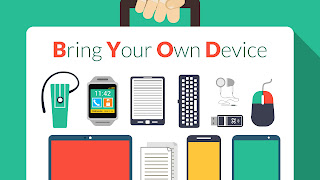Twitter Feed
The Time is Now for 21st Century Leadership
I’ve just had the opportunity to preview my good friend Melvin Greer’s newest effort, “21st Century Leadership: Harnessing Innovation, Accelerating Business Success“. Now in pre-release, this book highlights the compelling…
Public Cloud IaaS : A Price/Performance vs. Security Analysis
Industry’s transition from custom made, one-of-a-kind IT infrastructures to the standardize, commodity based cloud paradigm is well on it’s way. IBM’s recent “Under Cloud Cover” study highlights the rapidly of…
Catch the Cloud with DorobekINSIDER LIVE!
Yesterday I thoroughly enjoyed an opportunity to participate in the DorobekINSIDER LIVE edition on cloud computing. The conversation was both lively and informative. Joining me on the show were:…
Cloud Shines Brightly as Future of Disaster Response IT
The call for help began as a rumble. Twenty miles beneath the ocean’s surface, a rupture in a massive tectonic plate ripped a 310 mile-long break in the sea floor,…
NCOIC/NGA Demonstrates Use of Cloud in Disaster Response
When the world’s next major earthquake, tsunami or other disaster hits, military, government and civilian NGA project is available on the NCOIC website. responders will need to manage and…
NBC4 Puts On A Great GovCloud Show !!
NBC 4 in Washington, DC highlighted government cloud computing today as part of their GovInnovate show. Below is just a taste of the informative public service they provided. Go to…
OMB’s Evidence Memo: A Call for Cloud Services Brokerage
by Ray Holloman and Kevin Jackson In a late July memo the Office of Management and Budget requested cloud services brokerage. Well, not in so many words. Rather, OMB requested…
Cloud Services Brokerage Lessons From Alex Rodriguez, Baseball’s Trade Deadline
( A guest post from Ray Holloman, NJVC Corporate Communications) Two stories sat atop baseball’s marquee in the final days of July. The first was the non-waiver trade deadline, baseball’s…
Lessons Learned: VA Cloud Email Termination
According to a Federal Computer Week article by Frank Konkel, The Department of Veterans Affairs terminated its five-year, $36 million cloud computing contract for email and calendaring services with HP…
Deconstructing Cloud: An Excellent Guide to the Cloud Computing World
On an almost daily basis, I’m approach for my views on “cloud computing technology”. Although typically innocent in nature, I always cringe at the thought of enduring yet another hours…
- Increased employee mobility (63%), satisfaction (56%) and productivity (55%) dominate as the top drivers of BYOD. These employee related drivers are considered more important than reduced costs (47%).
- Security (39%) and employee privacy (12%) are the biggest inhibitors of BYOD adoption.
- 20% of surveyed organizations have suffered a mobile security breach, primarily driven by malware and malicious WiFi.
- Security threats to BYOD impose heavy burdens on organizations’ IT resources (35%) and help desk workloads (27%).
- Despite increasing mobile security threats, data breaches and new regulations, only 30% of organizations are increasing security budgets for BYOD in the next 12 months and 37% have no plans to change their security budgets.
- 72% – Data leakage/loss
- 56% – Unauthorized access to company data and systems
- 54% – Downloading of unsafe apps or content
- 52% – Malware
- 50% – Lost or stolen devices
- 49% – Vulnerability exploitation
- 48% – Lack of control on endpoint security
- 39% – Infrequent software updates
- 38% – Compliance
1. Create your policy before procuring technology: To effectively use mobile device management (MDM) technology for employee owned devices Policy must precede technology. Also note that these policies will have broad corporate-wide implications for IT, HR, legal, and security.
- Mobile device management
- Application security assessments
- Application testing services
- Application source code security assessments; and
- Embedded device security.
This post was brought to you by IBM Global Technology Services. For more content like this, visit ITBizAdvisor.com.
( Thank you. If you enjoyed this article, get free updates by email or RSS – © Copyright Kevin L. Jackson 2017)
Cloud Computing
- CPUcoin Expands CPU/GPU Power Sharing with Cudo Ventures Enterprise Network Partnership
- CPUcoin Expands CPU/GPU Power Sharing with Cudo Ventures Enterprise Network Partnership
- Route1 Announces Q2 2019 Financial Results
- CPUcoin Expands CPU/GPU Power Sharing with Cudo Ventures Enterprise Network Partnership
- ChannelAdvisor to Present at the D.A. Davidson 18th Annual Technology Conference
Cybersecurity
- Route1 Announces Q2 2019 Financial Results
- FIRST US BANCSHARES, INC. DECLARES CASH DIVIDEND
- Business Continuity Management Planning Solution Market is Expected to Grow ~ US$ 1.6 Bn by the end of 2029 - PMR
- Atos delivers Quantum-Learning-as-a-Service to Xofia to enable artificial intelligence solutions
- New Ares IoT Botnet discovered on Android OS based Set-Top Boxes


